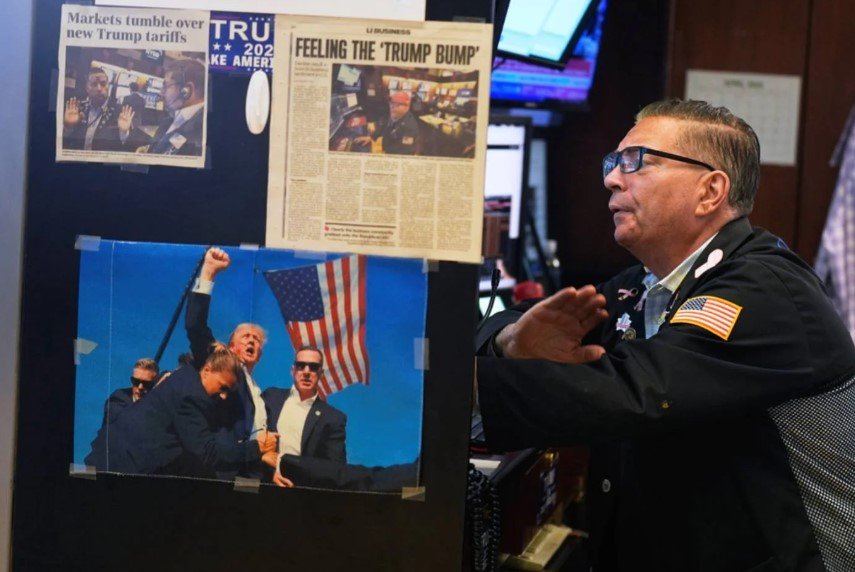WASHINGTON/BEIJING – Financial markets worldwide were on edge Wednesday as U.S. President Donald Trump’s new wave of sweeping tariffs—topping out at a combined 104% on Chinese imports—took full effect, reviving fears of a prolonged global trade war.
The White House’s latest trade salvo, announced last week and formally enacted at 12:01 a.m. EDT, includes an aggressive escalation of duties targeting a wide array of Chinese goods. Trump has threatened even higher levies unless Beijing fully rolls back its retaliatory tariffs.
In a fiery response, China said it would “fight to the end,” warning of countermeasures that could range from reciprocal tariffs to restrictions on U.S. businesses operating in the region. While specifics were not disclosed, analysts warn that an unyielding tit-for-tat exchange could plunge the global economy into recession if it persists.
“The 104% tariff is not just a negotiating tactic—it’s a strategic shift,” said Elaine Chen, senior economist at Nomura Global. “Markets are now trying to price in the possibility that this could be the new normal.”
Markets Brace for Volatility
Stocks across Asia and Europe wobbled, while U.S. futures pointed to a weaker open. Currency markets saw a rush to safe havens, with the yen and Swiss franc gaining amid escalating uncertainty. Commodities were not spared either—oil prices fell to a four-year low, while copper, often viewed as a bellwether for global trade, dipped sharply.

“The longer these tariffs stay in place, the more likely it is that corporate margins will get squeezed and demand will falter,” said Rahul Kapoor, global macro strategist at Barclays.
Global Targets Beyond China
The tariff hike on China is part of a broader “reciprocal tariff” campaign that Trump unveiled on April 2, targeting both adversaries and allies alike. Affected countries include Germany, Mexico, South Korea, and Canada, sparking diplomatic pushback and threats of retaliation.
So far, no exemptions have been granted, and Washington has signaled that further hikes are on the table if negotiations don’t materialize.
Recession Risk Looms
Economists warn that the sheer scale and suddenness of the tariff regime could undermine global trade flows, with ripple effects across supply chains, inflation, and investment. A prolonged standoff could shave as much as 1.2% off global GDP over the next 12 months, according to preliminary estimates from the IMF.
“If these tariffs persist beyond Q2, we may be looking at a global contraction by early 2026,” said Victoria Grant, chief economist at Brookfield Analytics.
What’s Next?
While Trump has left the door open for negotiations, analysts are skeptical about a near-term breakthrough, especially with both the U.S. and China digging in ahead of domestic political cycles.
The next few weeks will be critical in determining whether this is another short-term skirmish—or the beginning of a structural decoupling between the world’s two largest economies.
